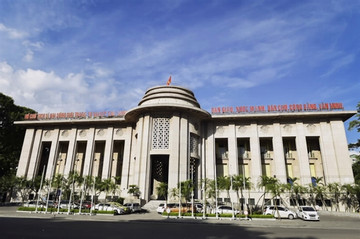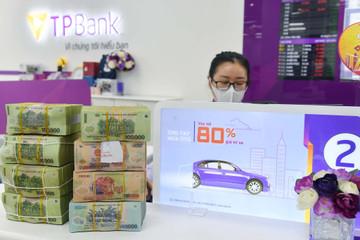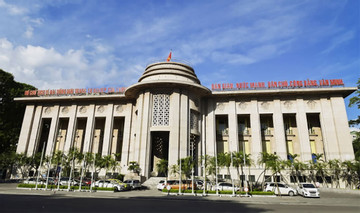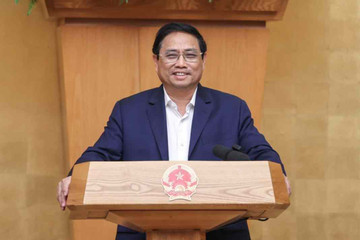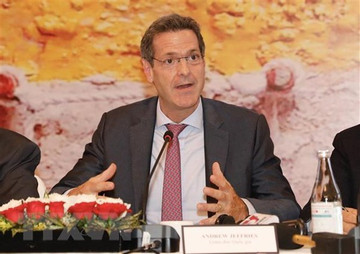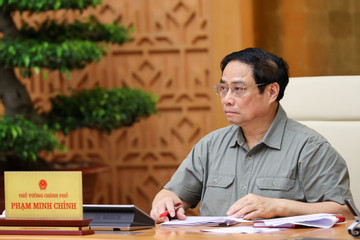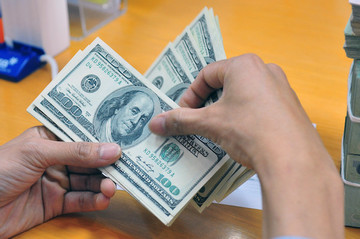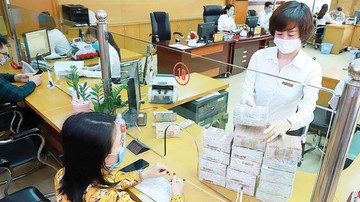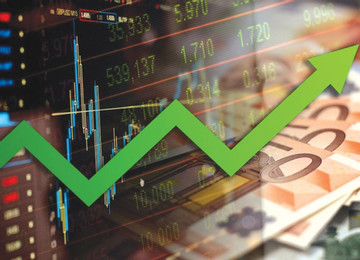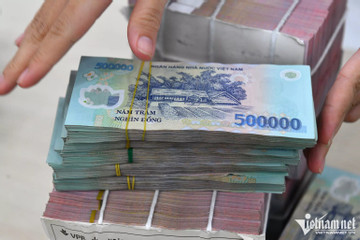- © Copyright of Vietnamnet Global.
- Tel: 024 3772 7988 Fax: (024) 37722734
- Email: [email protected]
interest rate
Update news interest rate
US interest rate stops rising, foreign capital expected to stay in Vietnam
The US FED has decided to stop interest rate increases, following a temperate monetary policy which aims at preparing a soft landing for the economy.
SBV to cut policy rates for 3rd time
The State Bank of Vietnam announced on Tuesday it will cut its policy rates again to prop up economic growth.
Bank deposits increase, but cannot catch up with credit growth
The State Bank of Vietnam (SBV) said that interest rates have become stable with the lending interest rate hovering around 9.3 percent per annum.
Some key interest rates fall further early next week
The State Bank of Vietnam, the central bank, announced five separate decisions on March 31 to further lower some key interest rates, with effect from April 3. This is the second round of rate cuts in March.
PM asks SBV to lower loan interest rates
Prime Minister Pham Minh Chinh has asked the State Bank of Vietnam (SBV), the nation’s central bank, to slash interest rates, make loans more accessible and focus on lending to key economic sectors.
The paradox of low inflation-high interest rates should be resolved
Vietnam's lending interest rates are higher than many countries in the world, while last year, Vietnam was one of the countries with the lowest inflation level. This paradox needs to be explained to find solutions to ease the burden on businesses.
Banks are offering depositors interest rates higher than the official rate
Most banks are quoting deposit interest rates under 9.5 percent as agreed. But some are paying higher than the quoted rates.
Banks requested to cut rates to support economic recovery
Governor of the State Bank of Vietnam (SBV) Nguyen Thi Hong has directed banks to continually reduce input costs with an aim to cut loan interest rates.
Banks slash lending interest rates by up to 3.5 percent per annum
After Vietcombank, HDBank has recently announced to lower lending interest rates for enterprises doing business in many industries with a total interest rate reduction of up to VND120 billion.
How will the US FED's interest rate hike affect the Vietnamese dong?
The Vietnamese dong may lose 4 percent of its value against the USD in 2022, while the deposit interest rate is predicted to lose 30-50 points after the US FED’s move and SBV’s first policy responses.
State Bank’ rate hike necessary to defend VND, control inflation: ADB Country Director
ADB Country Director Andrew Jeffries has talked on the recent interest rate hike by the State Bank of Vietnam in the context of the Fed, ECB and a number of countries raising their rates to curb inflation.
Prime Minister tells SBV to raise deposits, stabilize lending interest rates
Prime Minister Pham Minh Chinh has asked the State Bank of Vietnam (SBV) to consider raising the deposit interest rate ceiling, but to stabilize lending interest rates.
Credit growth limits in Vietnam and the effect on the economy
During a lesson about economic recession at Columbia University (USA) last year, my professor explained that to prevent a banking crisis, the world applies two policy approaches – repression or prudential.
Interbank interest rates stay high
Interbank interest rates rose to a 10-year high before dropping a little last weekend.
Corporate bond market struggling with challenges
The size of the corporate bond market is estimated at some VND1,374 trillion, equivalent to 15% of GDP. The Government aims to raise this figure to 20% by 2025.
Exchange rate fluctuations reduce national debt by VND57 trillion
The Government's outstanding debt by the end of 2022 is estimated to decrease by about VND57 trillion, down 2 percent compared to the outstanding balance at the end of 2021.
Cheap capital sources at most banks decline in Q2
Despite efforts to increase cheap capital sources, many banks reported their current account savings account (CASA) rate in the second quarter of 2022 declined compared to the previous quarter.
Why are interest rates picking up?
The first half of the year saw interest rates edging up 0.5-1 percentage point against the end of last year. Liquidity in the banking system was blamed for interest rate hikes.
Deposit interest rates rise, cash flow improves at banks
Deposits at banks have increased sharply following the commercial banks’ raising of interest rates. The highest deposit interest rate is 7.7 percent per annum.
State Bank of Vietnam faces pressure on exchange rate
The State Bank of Vietnam is facing multiple pressures in 2022 in managing the foreign exchange rate

